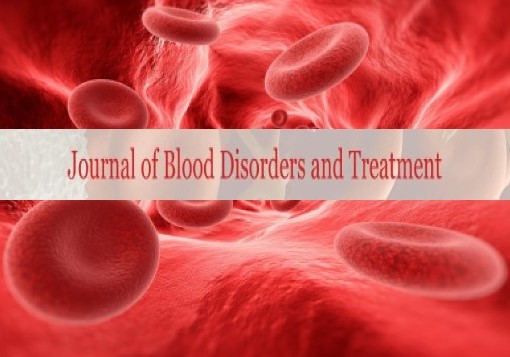The role of thrombolytic and its importance in the human body
#Equally contribution
Received: 08-Sep-2021 Accepted Date: Sep 22, 2021; Published: 29-Sep-2021
This open-access article is distributed under the terms of the Creative Commons Attribution Non-Commercial License (CC BY-NC) (http://creativecommons.org/licenses/by-nc/4.0/), which permits reuse, distribution and reproduction of the article, provided that the original work is properly cited and the reuse is restricted to noncommercial purposes. For commercial reuse, contact reprints@pulsus.com
Introduction
Platelets are essential for action within the blood and maintenance of traditional hemostasis. Below pathologic conditions like induration of the arteries, tube-shaped structure injury typically leads to overactive living substance activation, leading to occlusive clot formation, infarction, and stroke. Recent add the sector has elucidated variety of living substance functions distinctive from that of maintaining hemostasis, together with regulation of growth growth and metastasis, inflammation, infection, and reaction. Ancient therapeutic targets for inhibiting living substance activation have primarily been restricted to cyclooxygenase, integrin IIb 3, and also the P2Y12 receptor. Recently known communication pathways regulation {platelet blood living substance thrombocyte protoplasm living substance} operates have created it doable to develop novel approaches for medical specialty intervention within the blood to limit platelet reactivity [1].
Very early administration of therapy for acute infarction (AMI) has considerably reduced mortality in eligible patients. The aim of this study was to judge factors that influenced the time from symptom onset to hospital presentation and also the time from hospital presentation to the onset of thrombolytic agent treatment during a giant population of patients with AMI. This study enclosed 212,990 patients from 904 hospitals that participated within the National register of infarction. The median time from symptom onset to hospital presentation for those treated was one. 5 hours versus two. 7 hours for those not receiving thrombolytic agent treatments. Older patients and girls had accumulated delay times, as did those that acquired the hospital throughout daytime hours. Of the 59,802 (28%) patients UN agency received thrombolytic agent treatment, twenty third were treated < half-hour from admission; sixty three, < sixty minutes; and eighty three, < ninety minutes [2].
Diseases wherever lysis is used:
ST elevation cardiac muscle infarction: giant trials have shown that mortality may be reduced exploitation lysis (particularly fibrinolysis) in treating heart attacks. It works by stimulating secondary disintegration by enzyme through infusion of analogs of tissue urokinase (tPA), the supermolecule that ordinarily activates enzyme.
Stroke: lysis reduces major incapacity or death once given at intervals three hours (or maybe even vi hours) of cerebrovascular accident onset once there are not any contraindications to treatment.
Massive embolism: For the treatment of an enormous embolism, catheterdirected medical care may be a safer and simpler various to general lysis. This involves the injecting of medication directly into the clot [3].
Thrombolysis is sometimes endogenous. It should even be used directly into the affected vas throughout associate X-ray picture (intra-arterial thrombolysis), e.g. once patients gift with stroke on the far side 3 hours or in severe deep vein occlusion (catheter-directed thrombolysis).
Thrombolysis is performed by many varieties of medical specialists, together with interventional radiologists, tube-shaped structure surgeons,cardiologists, interventional neuroradiologists, and neurosurgeons. In some countries like the use of America, emergency medical technicians could administer thrombolytic for heart attacks in prehospital settings, by on-line medical direction. In countries with additional intensive and freelance qualifications, prehospital lysis (fibrinolysis) could also be initiated by the emergency care professional person (ECP). Alternative countries that use ECP’s embrace, African country, the uk, and New Sjaelland. Prehospital lysis is often the results of a risk-benefit calculation of the center attack, lysis risks, and first transdermal coronary intervention (pPCI) accessibility [4].
Drug interactions of clinical significance
Thrombolytic agents activate plasmin and induce a general fibrinolysis and medicinal drug state. Interaction of disintegration with natural action and living substance aggregation could be vital for synergistic interactions with alternative antiplatelet or medicinal drug medication. thrombolytic agent agents ar most frequently utilized in patients with coexistent vas medication, together with numerous antihypertensive, beta-blocking agents, nitrates and salicylate (acetylsalicylic acid). In acute coronary syndromes, anticoagulants and antiplatelet compounds like clopidogrel or compound protein IIb/IIIa receptor antagonists could be given.
Inducers or inhibitors of the haemoprotein P450 system aren’t rumored to have an effect on the pharmacology of any pharmaceutical. Since the elimination of the recombinant plasmin activators saruplase and alteplase depends on liver blood flow, medication moving internal organ blood flow may in theory have an effect on the internal organ clearance of those agents. In fact, a discount in thrombolytic agent activity has solely been incontestable for alteplase with vasodilative (glyceryl trinitrate). Pharmacodynamics interactions occur additional typically [5].
REFERENCES
- Jennifer Yeung, Wenjie Li , Michael Holinstat. Platelet Signaling and Disease: Targeted Therapy for Thrombosis and Other Related Diseases. Pharmacol Rev. 2018; 70(3):526-548.
- C Maynard, WD Weaver, C Lambrew. Factors influencing the time to administration of thrombolytic therapy with recombinant tissue plasminogen activator (data from the National Registry of Myocardial Infarction). Participants in the National Registry of Myocardial Infarction. Am J Cardiol. 1995;76(8):548-52.
- Saurav Chatterjee, Anasua Chakraborty, Ido Weinberg. Thrombolysis for pulmonary embolism and risk of all-cause mortality, major bleeding, and intracranial hemorrhage: a meta-analysis. JAMA. 2014;311(23):2414-21.
- Patricia Canhão, Filipa Falcão, José M Ferro. Thrombolytics for cerebral sinus thrombosis: a systematic review. Cerebrovasc Dis. 2003; 15(3):159- 66.
- S Harder, U Klinkhardt. Thrombolytics: drug interactions of clinical significance. Drug Saf. 2000; 23(5):391-9.





